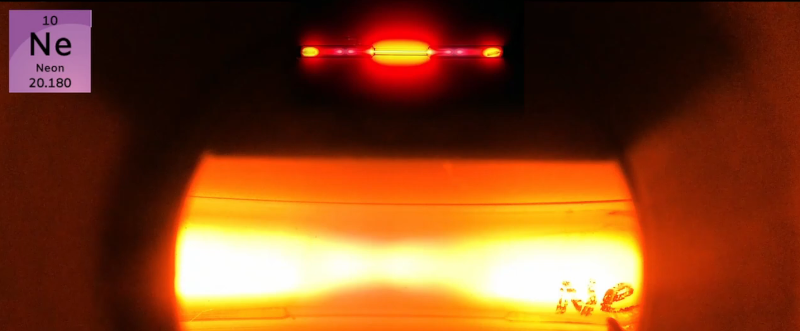[Project 326] wanted to know exactly what gas was in some glass tubes. The answer, of course, is to use a spectrometer, but that’s an expensive piece of gear, right? Not really. Sure, these cheap devices aren’t perfect, but they are serviceable and, as the video below shows, there are ways to work around some of the limitations.
The two units in question are “The Little Garden” spectrometer and a TLM-2. Neither are especially sensitive, but both are well under $100, so you can’t expect much. Because the spectrometers were not very sensitive, a 3D printed jig and lens were used to collect more light and block ambient light interference. The jigs also allowed the inclusion of special filters, which enhanced performance quite a bit. The neon bulbs give off the greatest glow when exposed to high voltage. Other bulbs contain things like helium, xenon, and carbon dioxide. There were also tubes with mercury vapor and even deuterium.
We’ll admit it. Not everyone needs a spectrometer, but if you do, there’s a lot of really interesting info on how to get the most out of these cheap devices. Apparently, [Project 326] was frustrated that he couldn’t buy an X-ray spectrometer and has vowed to create one, so we’ll be interested to see how that goes.
Some homebrew spectrometers can get pretty fancy. Of course, there’s more to spectroscopy than just optics.
















Hamamatsu has some very nifty microspectrometer modules. Not as cheap, but cover more ranges, and are of professional quality.
I’ve bought a C12880MA from ebay. It has a reasonable price, and working properly.
So at a fundamental level a 1080p web camera with the IR filter removed and the bayer filter removed and a diffraction grating to split the spectrum.
Fundamentally, yes , but the devils is in the details.
This is the we did for this space instrument https://www.cosmos.esa.int/web/bepicolombo/mertis
A friend of mine built a spectrometer of a damaged HDD and piece of CD.
Is there no company that will sell a high resolution camera (4K-8k) with the IR filter removed and the bayer filter removed during production. It would be like nerd catnip, globally there should be enough of a market for them even if it was only one product.
This.
I keep on wondering is there some kind of legal reason maybe ITAR or possibly BIS (category 3 – electronics) that it has not happened already. Or is there some other reason to prevent cheap and easy access to see near UV and near IR parts of the spectrum with the a monochrome sensor. Without the IR filter and without a bayer filter using silicon 350 nm to 1050 nm should be possible.
300–400 nanometres near Ultraviolet Visible to insects, birds and fish.
400–700 nanometres visible light
750-1400 nanometres Near-infrared
Or is the path of least resistance to find a cheap 4K(~8MP))/8K(~33MP) monochrome Security and Surveillance Camera and remove the IR filter (One that is really monochrome and has no bayer filter) ?
Wikipedia says that for a Silicon photodiode it is 190 to 1100 nm
The closest you’ll find are monochrome astronomy cameras (ZWO’s ASI series comes to mind).
They appear to be enhanced for IR but the glass inside will filter out the UV because they are designed to take photos and not spectroscopy. And they are not cheap, and they are not extremely high a resolution
I can find monochromatic sensors that it may be possible to modify (pry of the sheet of glass above the sensor, and replace with quartz). But they are not exactly what I would call cheap for the sensor and nothing else (~50 for the 12.5MP and ~85 for the 8 MP), and as for a honest to goodness datasheet with useful information, that requires NDA’s:
Sony IMX676-AAMR1: 3536 (H) × 3536 (V); approx. 12.50M pixel; Maximum frame rate in All-pixel scan mode: 12 bit: 30 frame/s, 10 bit: 60 frame/s
Sony IMX585-AAMJ1: 3840 (H) × 2160 (V); approx. 8.29M pixel; Maximum frame rate in All-pixel scan mode: 12 bit: 60 frame/s, 10 bit: 90 frame/s
I was hoping for a cheap pre-built security camera, which these sensors were designed for (great IR response already), the lack of the bayer filter increases the sensitivity so should be great for star gazers as well. Shame I can’t find a security camera with either part in them.